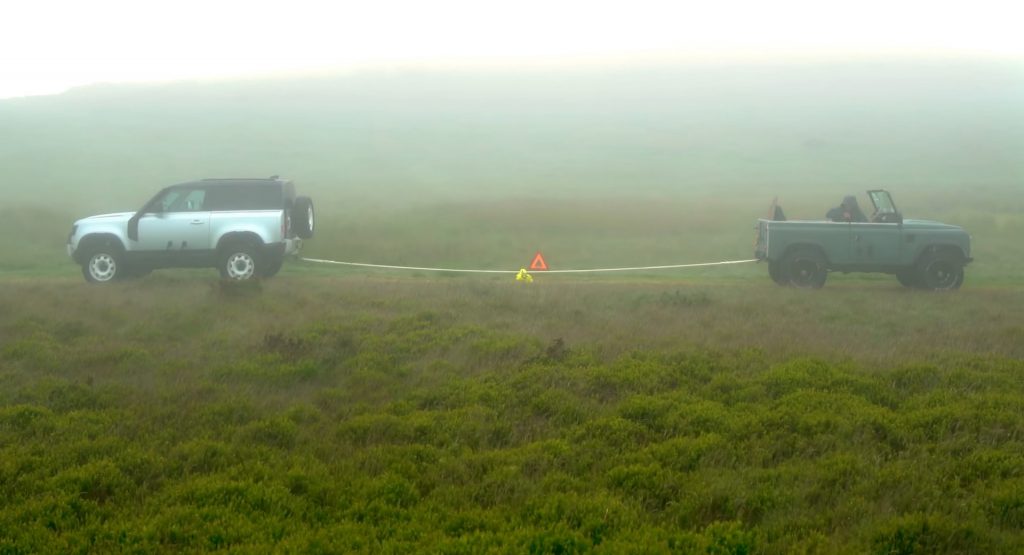More than a few tuners are converting classic cars to electric and among them is the appropriately named Electric Classic Cars, which took the electric drivetrain out of a Tesla and put it in a classic Land Rover Defender.
Although the benefits of electric motors’ instant torque have been covered at length on the dragstrip, those same advantages (instant, low down torque) should benefit it off the road, too. The idea of electric off-roading, be it in the upcoming GMC Hummer EV or the electrified Jeep Wrangler 4xe, is anything but an outlandish one.
To find out how effective an electric drivetrain is at putting down torque, CarWow’s Mat Watson put the electric Defender up against a modern Land Rover Defender 90. The latter packs just 250 hp (253 PS/186 kW), compared to the EV’s 450 hp (456 PS/335 kW), but the modern SUV’s diesel engine is mighty where it counts. Producing 420 lb-ft (570 Nm) of torque, it’s got more twisting power than the EV’s 331 lb-ft (450 Nm).
Read Also: Could These Tesla-Powered Land Rover Defenders Be The Ultimate EV Off-Roading Conversions?
Although the electric Defender is fitted with a heavy battery pack to power its electric motor, its lack of a roof, or safety and luxury features mean it weighs in at around 2,000 kg (4,409 lbs), less than the 2,228 kg (4,911 lbs) of the modern Defender with its screens, other modern amenities, and roof.
That should put the EV at a disadvantage on the very rainy Welsh hill where this test is being conducted. And although the converted Defender has knobbly all-terrain tires, the modern SUV features clever modes and traction control to help reduce the amount of slippage that its more road-biased tires will succumb to.
So who wins in this tug of war, the old Defender with modern propulsion or the new one with more modern tech but older, ICE power? Watch and find out.




